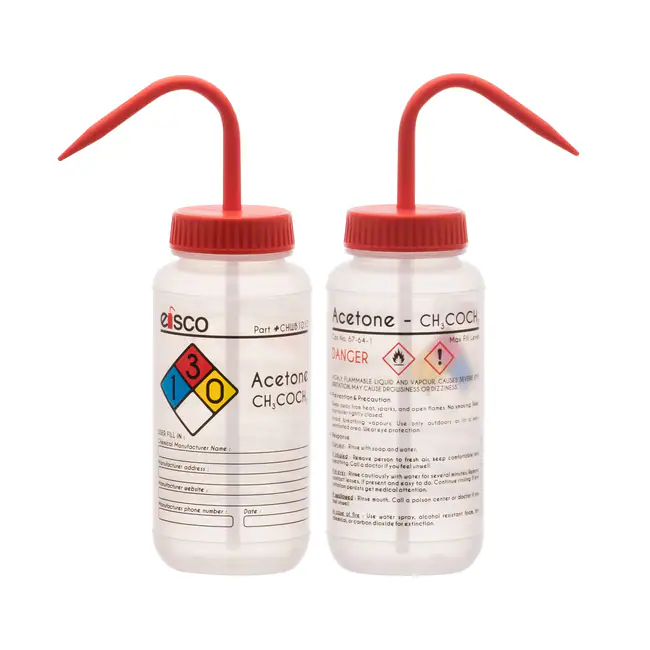
Many students get confused when they are asked to use a laboratory squeeze bottle in their experiments. They often think it is a completely different piece of equipment from the wash bottle they already know.
In reality, laboratory squeeze bottles and wash bottles are the same type of container—just known by different names.
The term wash bottle is the more traditional name. It usually refers to a plastic bottle with a bent dispensing tube, commonly filled with distilled water and used to rinse or “wash” laboratory glassware.
The term laboratory squeeze bottle, on the other hand, is broader and more descriptive. It emphasizes the squeezing action used to dispense the liquid. These bottles may hold not only water but also solvents such as ethanol, acetone, or other laboratory solutions like buffers and detergents.
In short, all wash bottles are squeeze bottles, but not all squeeze bottles are wash bottles, since squeeze bottles can contain many different liquids beyond just water.
Bent vs. Straight Spouts in Laboratory Squeeze Bottles (Wash Bottles)
Laboratory squeeze bottles, also known as wash bottles, come with either straight or bent spouts. So, what’s the difference—and which one is better? The answer is that neither is truly better; the choice depends on how you need to dispense the liquid.
A bent (angled) spout makes it easier to direct a stream of liquid into hard-to-reach places, such as inside glassware, test tubes, or narrow flasks. It also allows you to rinse surfaces at an angle without having to tilt the entire bottle.
A straight spout, on the other hand, delivers a more direct flow. It’s ideal when you need a steady stream of liquid into open containers or onto a specific spot.
So, bent spouts are best for precision and accessibility, while straight spouts are best for direct pouring and simple dispensing.



